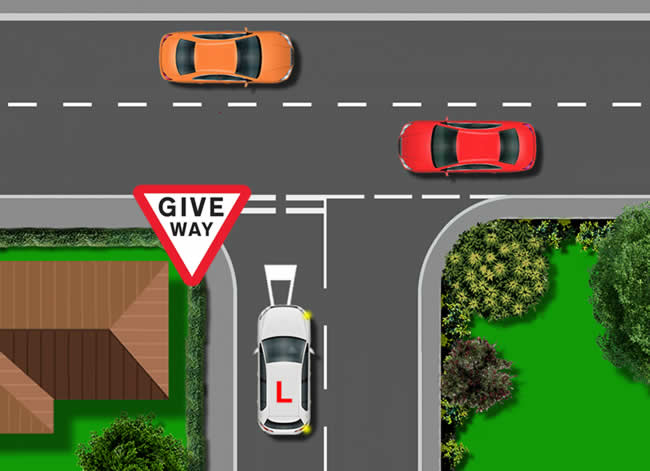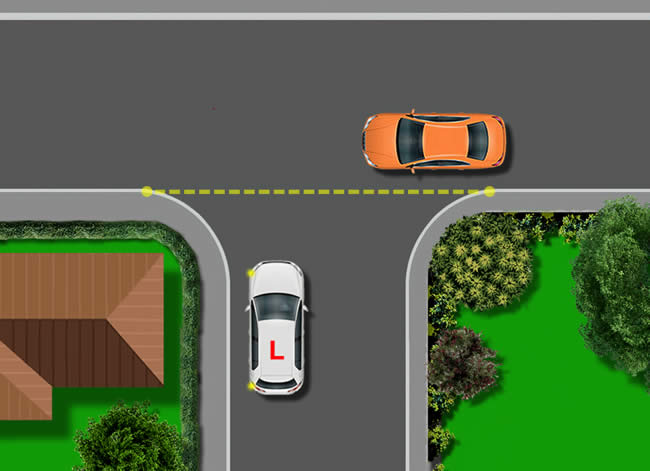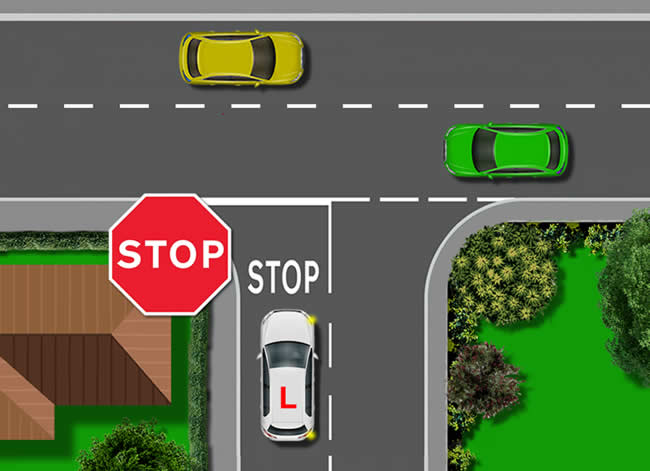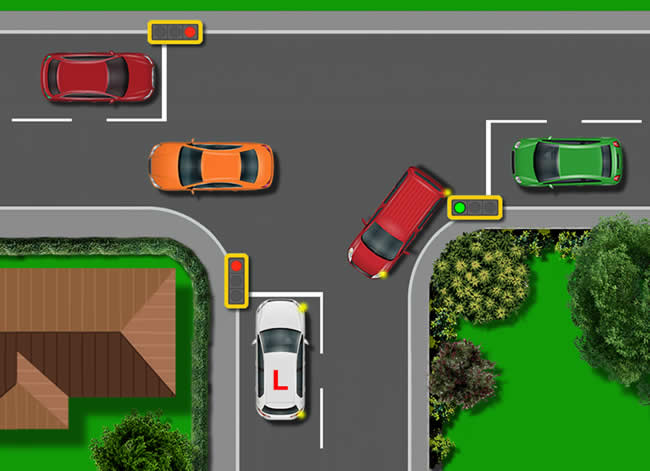A T-junction comprises of a minor road that joins a major road. As a general rule, traffic on the major road will have right of way over traffic on the minor road, unless signs and road markings say otherwise.
As you begin learning to drive, you’ll need to deal with many T-junctions. Although every T-junction has its own unique characteristics, understanding the type of T-junction that you’re approaching will help you to safely navigate the road ahead. The 4 types of T-junctions that you’ll encounter are:
Give Way (Marked) T-Junction
A T-junction with dashed give way road markings (marked) is the most common type of T-junction that you’ll come across. Along with the road markings, you’ll often see a triangular give way sign warning you of the junction ahead. Some junctions may have the give way road markings but no sign.

As you approach the T-junction from the minor road, traffic on the major road will have right of way. Prepare to give way and if necessary, stop just prior of the give way lines.
Unmarked T-Junction
Unmarked T-junctions can be challenging for learner drivers due to there being no road markings. Even though there are no road markings at an unmarked T-junction, you must still be prepared to stop and give way if necessary.

So that you know where to stop at an unmarked junction, visualise a give way line connecting each of the furthest kerbstones. Unmarked T-junctions will not have any road markings or warning signs and can often be found around quiet residential streets or country lanes.
Stop T-Junctions
At a stop T-junction, it’s mandatory that you stop and give way to traffic on the major road. At a stop junction, there will be a solid stop line along with red octagonal stop sign.

Stop junctions aren’t used too commonly in the UK, but those that are in place are located in areas hazardous areas where visibility of traffic on the major road is restricted. We would refer to this as a closed or blind junction. By law, you must stop just prior to the stop line and give right of way to traffic on the major road.
Light Controlled T-Junction
A controlled T-junction makes use of traffic lights to determine who has right of way. Controlled junctions are used commonly in busy towns and city areas to help control the flow of traffic and to make busy junctions safer.

At a red traffic light, you must stop just prior to the white stop line. An amber light also means stop, but with the slight exception in that if you’ve already crossed the white stop line, then you may continue, or if you’re so close to the stop line that stopping may cause an accident, you may continue.